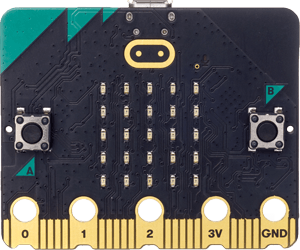The BBC micro:bit is a pocket-sized computer that introduces you to how software and hardware work together. It has an LED light display, buttons, sensors and many input/output features that, when programmed, let it interact with you and your world. The new micro:bit with sound adds a built-in microphone and speaker, as well as an extra touch input button and a power button. Find out more in this video:
Description
This Club pack is a pack of 10 BBC microbits with 10 x 30cm USB cables, 20 x batteries, and 10 x battery holders. This is the perfect option if you are planning to run workshop/club/classroom based activities teaching how computers work.
The micro:bit helps you understand how computers work. When you type on your laptop or touch the screen on your phone, you’re using an input device. Inputs allow computers to sense things happening in the real world, so they can act on this and make something happen, usually on an output like a screen or headphones.
In between the input and the output, there is the processor. This takes information from inputs like buttons, and makes something happen on outputs, like playing a song in your headphones. The micro:bit’s inputs, outputs and processor work just like the ones on your phone or computer.
Lesson resources for teachers
Planning and teaching with the micro:bit
Primary ages 7-11
Complete, editable computing units of work and resources with cross-curricular links for art, science, geography and more, curriculum-linked to England KS2 and Code.org elementary CS Fundamentals.
Units of work with downloadable, editable resources covering computing fundamentals through to cyber security, cryptography and creative design projects, curriculum-linked to England KS3.
View all Lessons
These videos explain how the micro:bit’s inputs, outputs and processor work just like the ones on your phone or computer:








